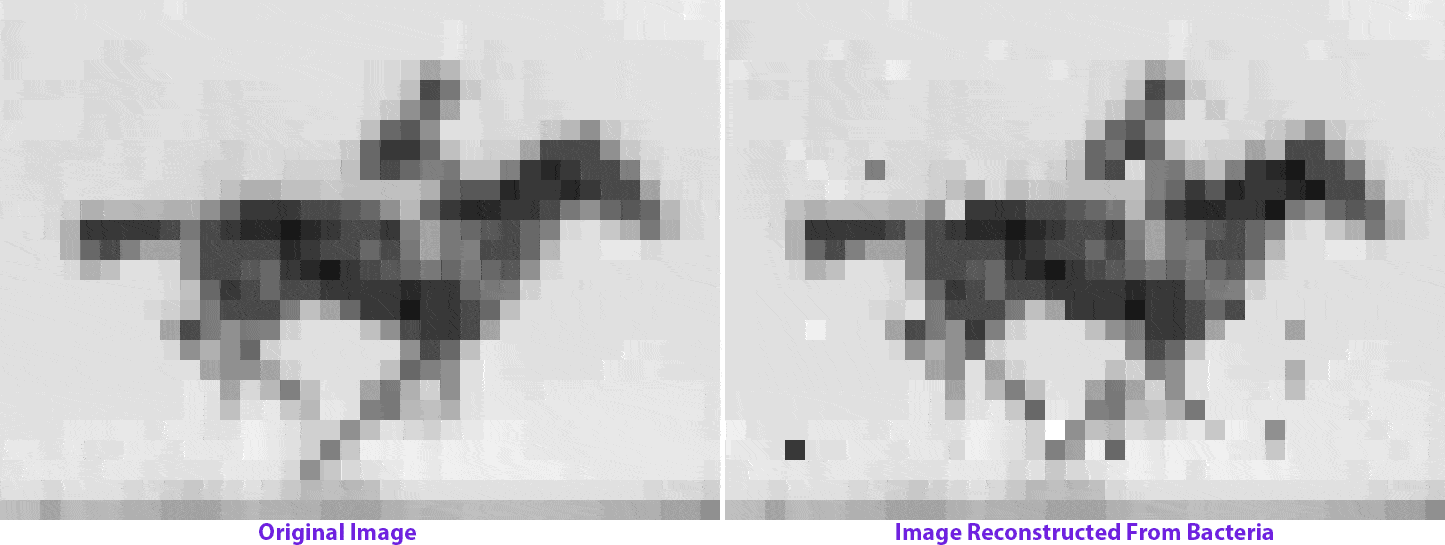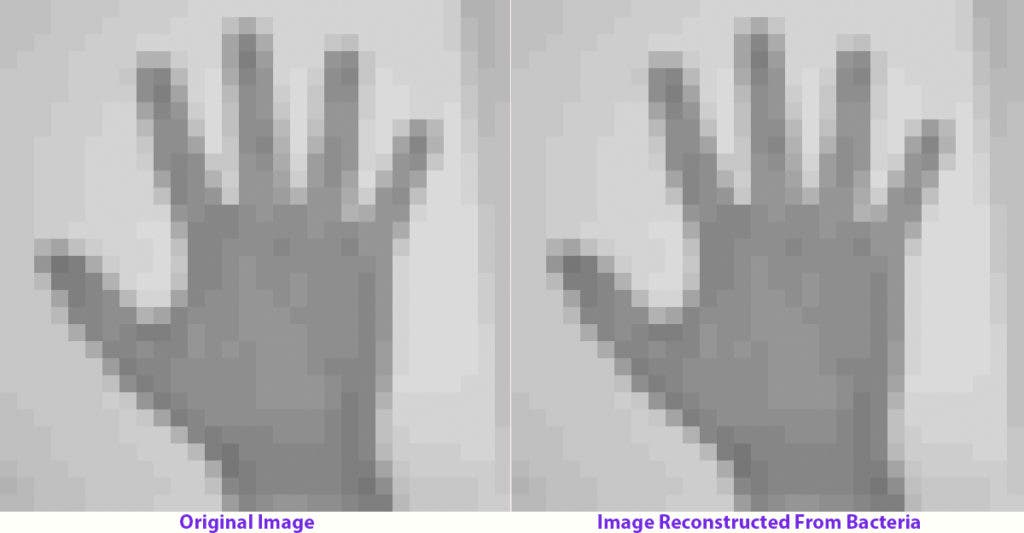
DNA is often called the ‘blueprint of life’. That’s because it contains the instructions needed for an organism to grow, develop, survive and reproduce. Almost every cell in your body contains DNA and all the information needed to make you what you are, from the way you look to which hand you write with. What’s more, information is so neatly packed that you could store all of the world’s data (!) on a DNA hard-drive the size of a teaspoon. Of course, that’s a lot easier said than done — but we’re getting there.
One of the latest achievements in the field of DNA data storage comes from Harvard University which for the first time demonstrated CRISPR can be used to encode information in bacterial DNA. The demonstration involved encoding images and a short movie from Eadweard Muybridge’s Human and Animal Locomotion in Escherichia coli DNA.
CRISPR (you say it like “crisper”) stands for Clustered Regularly Interspaced Short Palindromic Repeats. Scientists use CRISPR as a sort of molecular scissor to target and cut specific sequences of the genome; basically, it’s a way to make our genetic editing much more accurate. Experts say this gene-editing method can be used to eliminate mutations that cause diseases or disabilities. It could also be possibly used to make designer babies that grow smarter or healthier than they normally would have. For instance, in 2015, a team of Chinese scientists made headlines when they used CRISPR in human embryos to prevent a blood disorder called beta thalessemia. It proved very controversial to say the least.

Earlier this year, a team of American researchers demonstrated a method that can encode 215 petabytes of data — twice as much as Google and Facebook combined hold in their servers– on a single gram of DNA or 100 times more than previously shown. The scientists at the New York Genome Center (NYGC) encoded then retrieved without errors a full computer operating system, an 1895 French film, “Arrival of a train at La Ciotat,” a $50 Amazon gift card, a computer virus, a Pioneer plaque and a 1948 study by information theorist Claude Shannon.
This time, the encoded media was far more modest, as this is the first time CRISPR was used to insert data in DNA. The Harvard researchers led by Professor Seth Shipman encoded very low-resolution images and a short GIF composed of five frames of the mare ‘Annie G’ galloping at 36×26 pixels. Nucleotides, which are basic building blocks of DNA, are used as the code for each individual pixel. The sequences are delivered over time to living bacteria. Once inserted, the E. coli genome is sequenced and the images are reconstructed by reading the pixel nucleotide code with around 90% accuracy, as reported in Nature.
Obviously, this method won’t be used to store usable data anytime soon but it might prove to be a powerful research tool that might open new frontiers of science. Shipman says he’d like to make ‘living sensors’ using this method that record what’s happening inside a cell and its environment. Imagine what progress neuroscience could see, for instance, if scientists could record all the molecular events that a neuron undergoes during the course of its lifetime.


